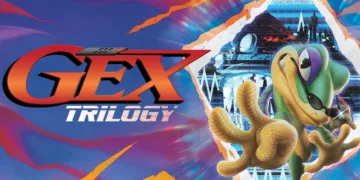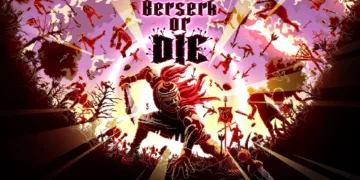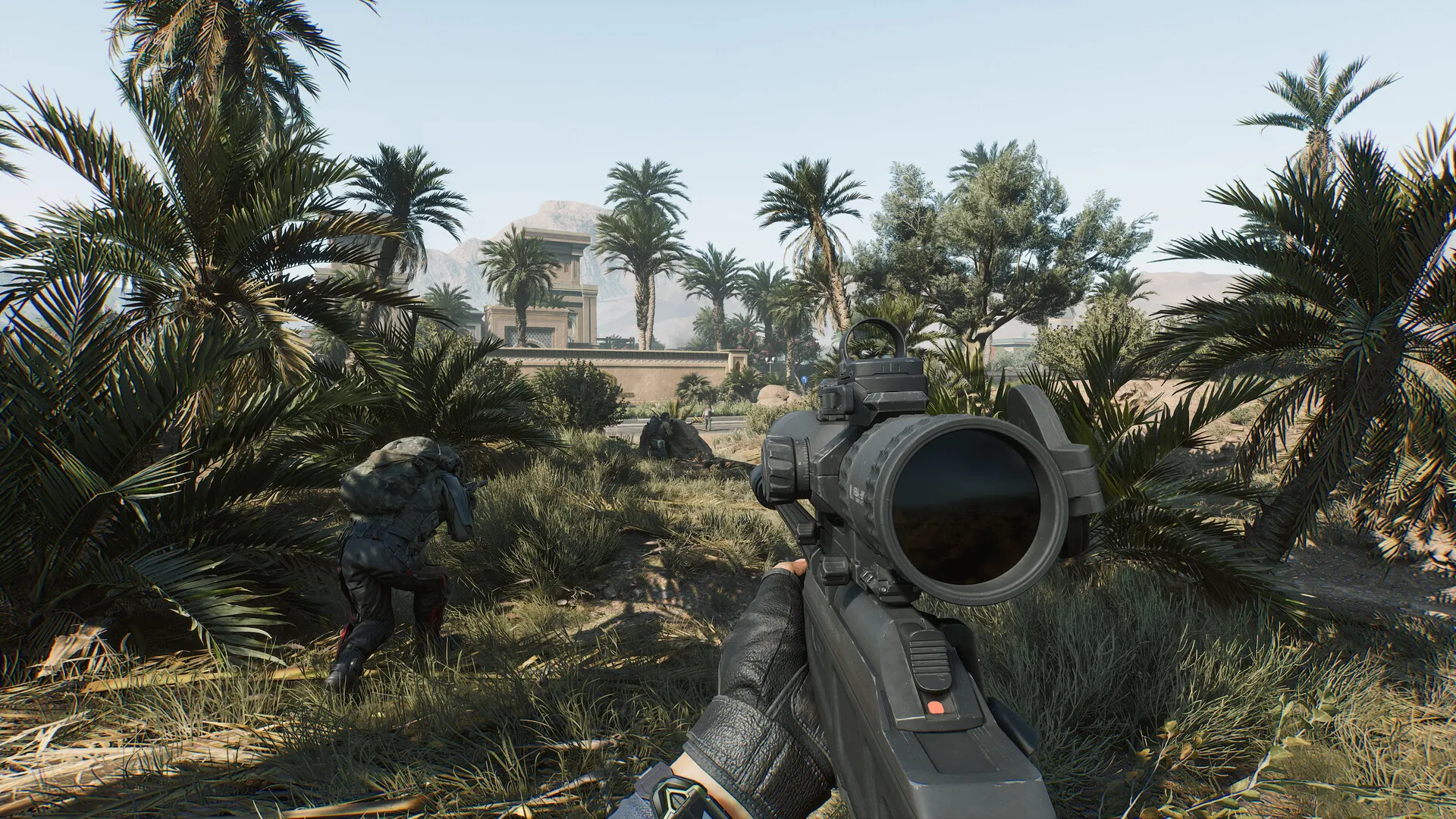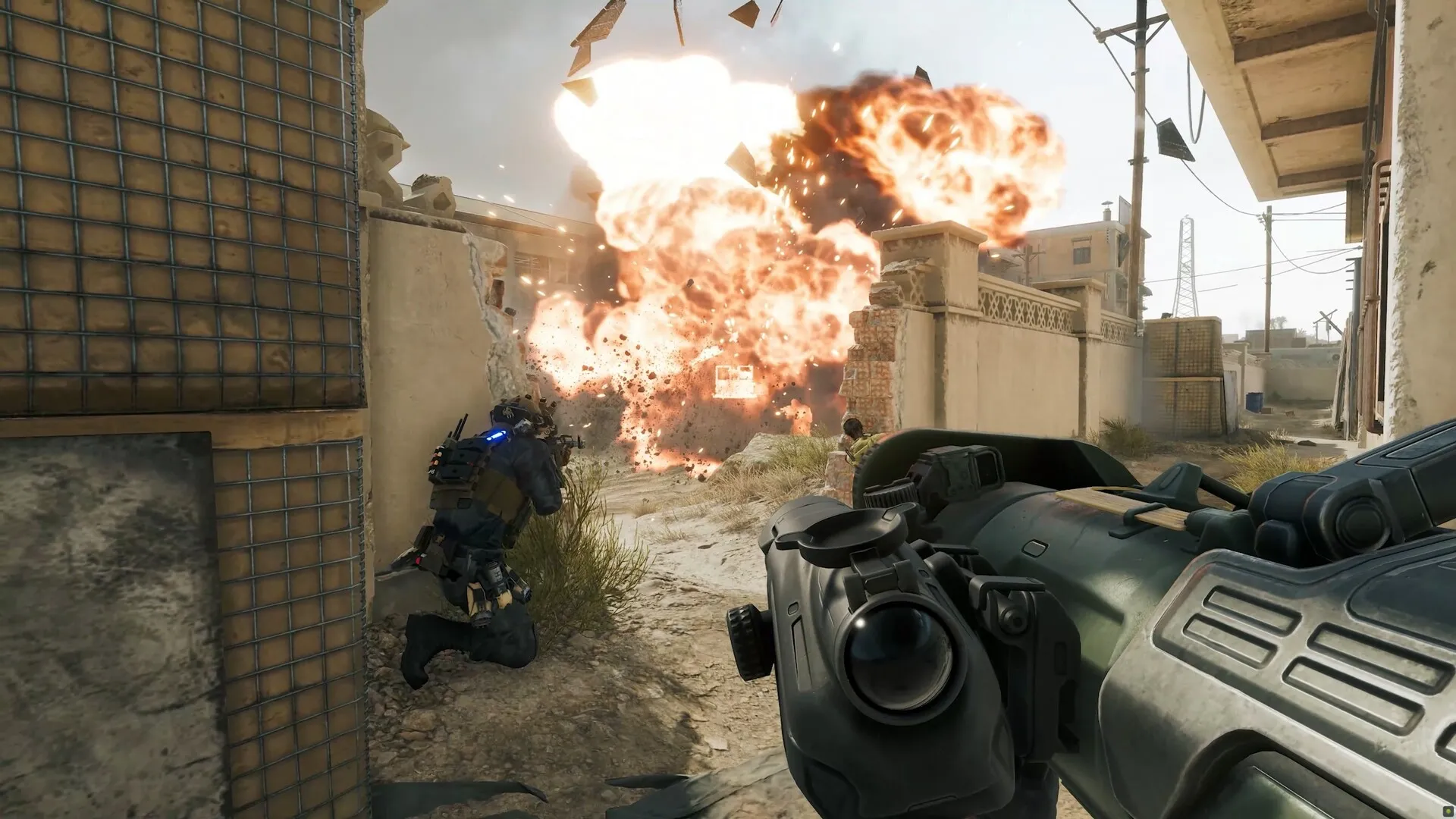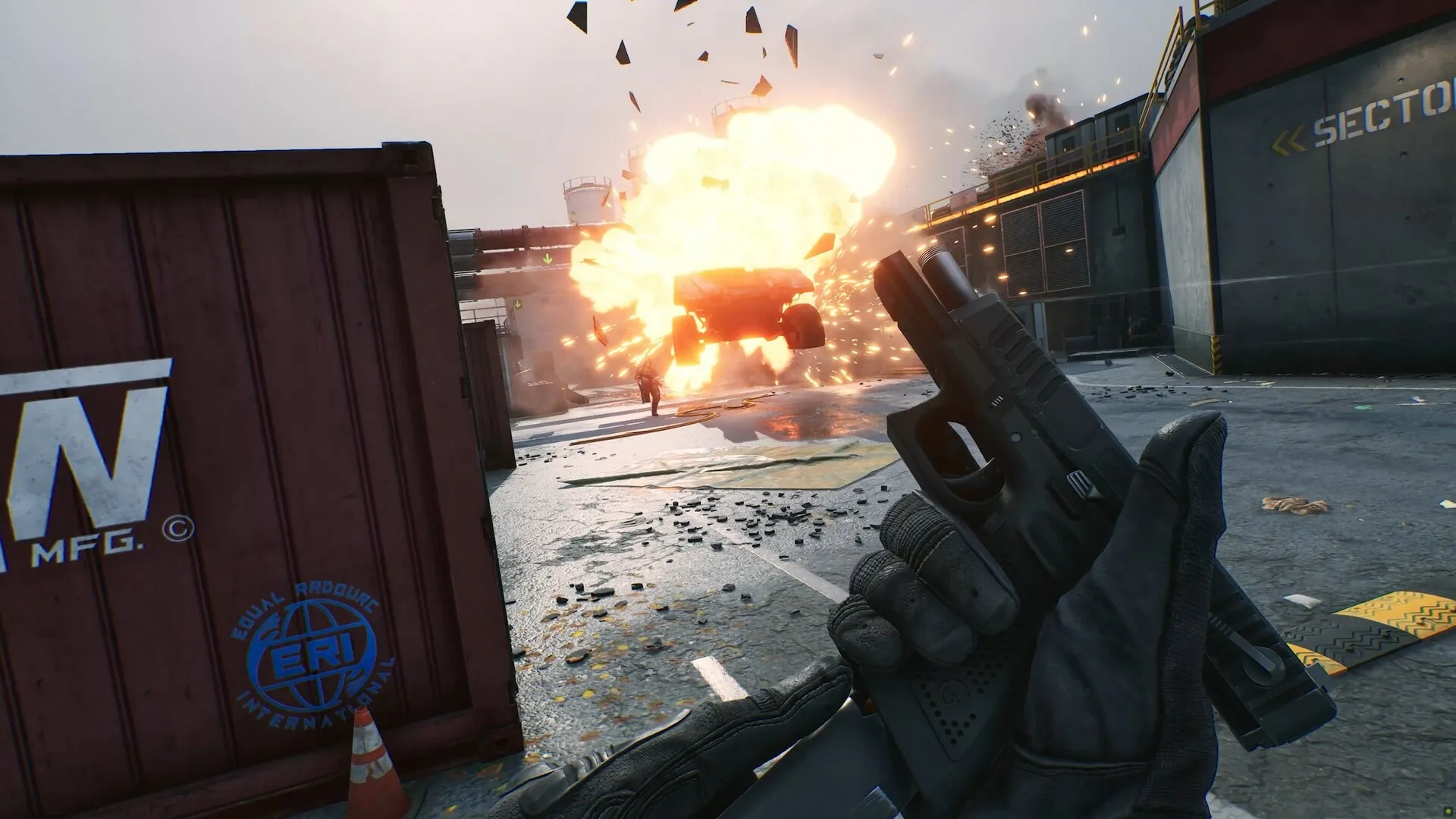Delta Force is a free-to-play tactical shooter that aims to carve out a crowded niche while bringing back an established brand. This new version, which has roots in the late 1990s, is both nostalgic and new, combining old-school military gameplay with newer game mechanics. Offering players a blend of chaotic battlefield experiences and strategic PvE battles, the game’s design represents an understanding of modern shooter dynamics while paying homage to its predecessors.
Delta Force Core has three separate game modes: Warfare, Operations, and Black Hawk Down, which hasn’t come out yet. When 64 players face off against each other in Warfare, it stands out as a massive PvP experience that resembles the Battlefield series.
Players must carefully take points and work together to turn the tide of the battle in this situation, where teamwork is crucial. In comparison, Operations shifts the focus to a more methodical PvE approach, where squads sneak into enemy territory to steal loot and fight off AI threats. Offering a different adrenaline rush, this mode stresses tactical decision-making and player coordination. The new Black Hawk Down mode is supposed to make the story even bigger, but there aren’t many details yet.
Together, these modes make up a rich gameplay tapestry that caters to different player preferences and encourages both new and experienced players to engage in the tactical dance of combat. As players deal with the chaos of war and the results of their decisions in a dynamic environment, the integration of narrative elements, especially in Operations, suggests a deeper storytelling potential.
Navigating the Battlefield: Gameplay Modes in Delta Force
The main play mode is warfare, which puts players in huge PvP fights with up to 64 other players. The emphasis is very much on objective-based gameplay in this game, so getting points and working together with teammates are very important. In Warfare, the gameplay is more like that of old-school shooters like Battlefield, rather than the usual deathmatch mode found in many shooters.
The most interesting feature is the Attack and Defend mechanic, which introduces a layered tactical element: one team must take over key locations while the other defends them. As players experience the paradox of being both attacker and defense, this dynamic creates a push-and-pull tension that keeps games engaging.
The enormous maps enhance this experience by promoting exploring and tactical positioning. To gain the upper hand, players must adapt to their surroundings by using cars and a variety of agents. In particular, the bullets’ slow speed can sometimes feel at odds with the gameplay mechanics. Players who are used to the more responsive mechanics of other shooters may find this choice frustrating, even though it is intended to promote realism. However, a satisfying emotional payoff comes from successfully leading a team effort to take control of a point, fostering a strong sense of camaraderie.
Operations mode, on the other hand, focuses on a more personal PvE experience. Players team up in groups to sneak into enemy territory, fight AI opponents, and steal valuable loot. Allowing for strategic planning and execution, this mode accepts a slower, more methodical pace. Offering a wide range of environments with goals like bounty hunters and intelligence caches, the map design is very important. The maps in Delta Force are much more detailed than those in games like Escape from Tarkov, making wandering feel more like a chore than a chore.
In Operations, the integration of player choice stands out the most. Squads must make important choices as they move through the AI-infested zones, such as whether to engage directly or covertly. These decisions are made during gameplay to make gameplay more complex, as players must constantly weigh the risks and benefits. This mode also adds a bit of surprise by introducing new types of enemies and situations that players didn’t expect, like tough enemies with armor or dangerous environments that keep them on their toes.
There aren’t many details about the new Black Hawk Down game yet, but people are very excited about it. Given its name, it may focus more on story-driven situations, with a single-player campaign or co-op missions emphasizing combat’s emotional costs. This might open up more interesting storylines, allowing players to connect more deeply with the world and its characters. If done well, connecting player decisions with emotional outcomes and expanding the game’s thematic effect could enhance Delta Force’s overall narrative cohesion.
Delta Force’s blend of tactical depth and player-driven narratives aim to offer something special, appealing to both casual players and diehard fans of the genre in a market frequently dominated by fast-paced shooters. The game’s interplay between its mechanics and the stories it tells encourages players to engage with it carefully, making each decision stand out in the heat of battle.
Engaging the Battlefield: Combat Mechanics and Dynamics in Delta Force
Delta Force’s shooting mechanics, which aim for realism and tactical depth, are at the core of its combat system. The bullet trajectory system used in the game forces players to lead their targets, making accuracy crucial, especially at long range.
An emphasis on realism may appeal to players who want a challenge, but it can also be problematic. More arcade-style shooters, like Call of Duty, have bullets that move almost instantly. Delta Force’s slower projectile speed can feel strange at first. This design choice creates a more immersive experience but can slow down the fast-paced gameplay, especially in objective-based modes where quick reflexes are often needed.
A unique dynamic between realism and gameplay speed can be frustrating for players who are used to more fluid mechanics. When there are a lot of bullets flying around, it can be hard to keep track of them all at once. This can lead to disconnections, where players may be out-maneuvered before reacting properly. This feature requires strategic thinking and adaptability that may appeal to hardcore gamers but alienate those seeking a more approachable shooting experience.
The combat dynamics of Delta Force are significantly influenced by vehicles, offering players strategic options that can turn the tide of the battle. Tanks and armored vehicles offer powerful firepower and mobility, allowing teams to take control of targets when used correctly. The game also ensures that ground combat is still possible by having a wide range of operatives, each with special skills that cater to different playstyles.
Like the balance in games like Battlefield, these operatives work like a mix of standard load-outs and character classes. For example, players can switch between characters that are good at sniping or fighting vehicles, which lets them adapt to changing situations on the battlefield.
This level of adaptability makes teamwork more likely because players have to think about how to make their squads and use their skills together to counter enemy plans. When players time their moves perfectly or use their characters’ skills to gain a strategic edge, the interplay between vehicles and operatives adds new dimensions to the combat experience.
Delta Force’s integration of combat mechanics with its overarching story of tactical warfare encourages players to engage thoughtfully with the chaos of battle. Players’ decisions regarding their characters and vehicles help them understand their place in the team more fully, enhancing the emotional stakes of every encounter.
Earning Your Stripes: Progression and Reward Systems in Delta Force
Delta Force has a progression system that awards players for multiple actions, such as killing enemies and helping other players. This flexible approach to experience points (XP) encourages participation in various game styles, making it approachable for new players while still rewarding experienced ones.
The system’s design considers that not all contributions to a match are equal, but they can all be important. Players are encouraged to take part in firefights and help their teammates, which makes it so that working together is necessary to win.
This way of XP rewards fosters a sense of satisfying and inspiring progression. Players quickly learn that even small changes can lead to big improvements, allowing them to get new tools and skills that fit how they play. This system is engaging, but it might not have the depth of RPG-style progression found in independent games, where decisions greatly impact how characters grow. The framework of Delta Force is simple, which may appeal to people who want a simpler experience but might make die-hard core RPG fans want more complex character arcs.
The loot system in Delta Force, which is most evident in Operations mode, introduces an additional level of engagement. During missions, players can find different kinds of things and gear. The Black Site is where they can manage and improve their load-outs. This setup enables players to experiment with different strategies by changing their equipment before going into combat.
The ticket system adds a fun new twist to managing stuff. Players get Recruit Tickets when extractions fail. These tickets are like a safety net that lets players keep playing even after failures. This option encourages risk-taking, as players can experiment with new loadouts without worrying about losing everything. While the system works, it can make the looting experience too easy, as players may rush to marked safes for the best rewards without fully exploring the environments. This might lead to missed chances for immersion and learning.
Impressive graphics enhance the total gameplay experience in Delta Force. The map’s features are stunning, showing various landscapes, from wide deserts to crowded cities. Every location is made to immerse players in its aesthetic, making every interaction visually engaging.
In terms of performance, the game works well on a wide range of hardware, from average to high-end computers. Some players have mentioned small problems, like textures popping in and out occasionally, but these don’t get in the way of the gameplay. The attention to detail in the graphics goes well with the game’s themes of tactical warfare and strategy, making the player feel even more connected to the action. Thanks to the game’s overall visual appeal, players are encouraged to immerse themselves in Delta Force’s world while navigating its intricate mechanics.
Navigating the Battlefield: User Experience and Monetization in Delta Force
Delta Force uses a free-to-play strategy that successfully combines accessibility and monetization. An important draw for casual players is that they can jump right into the action without paying anything upfront.
The game has a standard battle pass system, offering free and paid tiers that give cosmetic rewards without changing the gameplay. This strategy allows players who don’t want to spend money to still enjoy the full range of events without feeling like they need to buy their way to success.
The appearance of microtransactions may worry some players, even though the monetization strategy is generally reasonable. Even though cosmetic things make up most of the offerings, there are equipment bundles that can make getting gear faster in Operations. Even if these things don’t change the core gameplay, they can give the impression of pay-to-win dynamics. Finding a mix between giving people reasons to spend money and keeping the playing field level is important. Delta Force mostly does this by focusing on the player experience.
How the community works affects the user experience in many ways, especially regarding player fairness and matchmaking. New players may find themselves matched up against more experienced opponents, which can be annoying and discourage continued play. The potential for better matchmaking systems, allowing for more balanced experiences that cater to various skill levels, becomes evident as the player base grows.
Players share strategies and tips to enhance overall gameplay, so participation in the community is essential for Delta Force’s survival. The game’s setup promotes communication and teamwork, fostering a sense of camaraderie among players. As Delta Force develops, the interplay between user experience and community engagement will be crucial to its success, ensuring both new and seasoned players feel invested in the game’s future.
Battling the Odds: Conclusion and Final Thoughts on Delta Force
Delta Force is an interesting combination of large-scale PvP and strategic PvE gameplay. It does a good job drawing from its history while adding new mechanics. The strong leveling system and wide range of characters encourage engagement in both Warfare and Operations modes, allowing players to find their niche.
However, there are still problems, especially in balancing player experience through match mechanics and handling the nuances of its shooting mechanics, which may alienate those who prefer a more fluid approach.
Although there are still concerns about microtransactions, the game’s free-to-play approach strikes a commendable balance between accessibility and fair monetization. The community dynamics have the potential to change as the player base expands, enhancing overall engagement.
Delta Force is a good option for players looking for a tactical shooter that awards strategic thinking and teamwork. Offering a distinctive blend of chaos and collaboration, it welcomes casual gamers and die-hard fans to immerse themselves in its vast battlefield.
The Review
Delta Force
Delta Force successfully combines tactical gameplay with core progression systems, offering a rich experience for both casual and hardcore players. The game's many modes and easy-to-understand monetization model make it a great place for strategic warfare, even though the shooting mechanics and matchmaking could use some work. Its strong group potential is a good sign for future growth.
PROS
- Engaging tactical gameplay with diverse modes.
- Strong progression and leveling system.
- Accessible free-to-play model with fair monetization.
CONS
- Shooting mechanics can feel clunky and slow.
- Matchmaking issues may frustrate new players.
- Microtransactions raise concerns about balance.






































